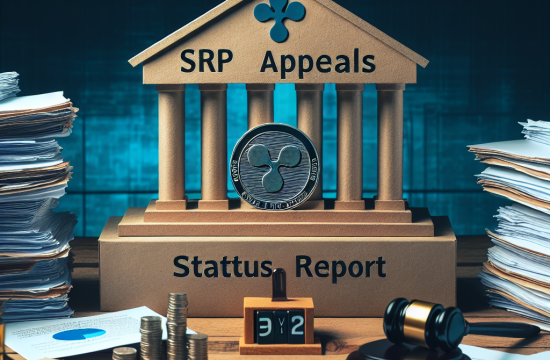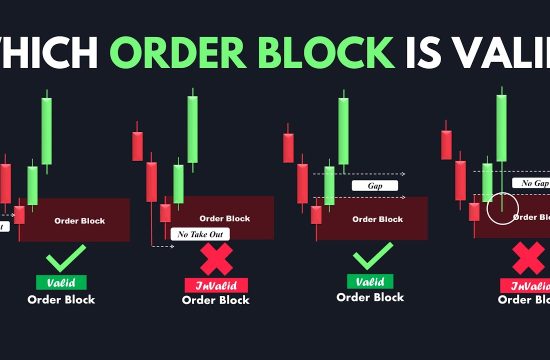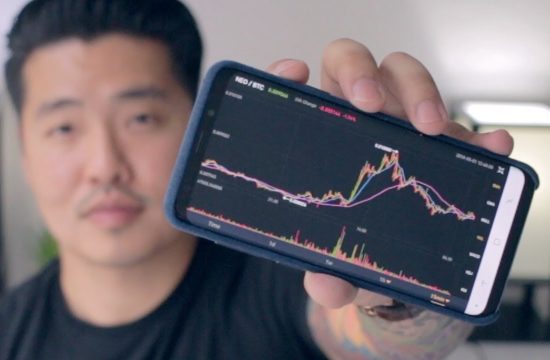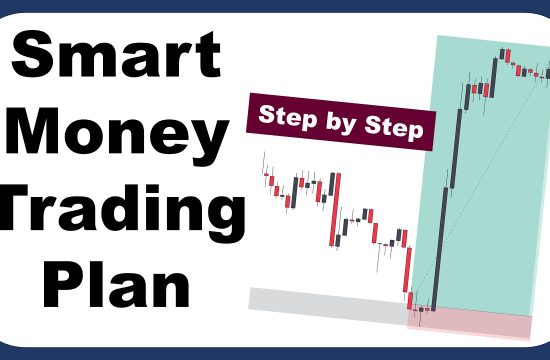Understanding Moving Averages
What Are Moving Averages?
Let’s kick things off with moving averages because they are a staple in trading. A moving average smooths out price data by creating a constantly updated average price. This helps traders spot trends in the market more easily.
There are various types of moving averages, but the two most common ones are the Simple Moving Average (SMA) and the Exponential Moving Average (EMA). The SMA gives equal weight to all prices, while the EMA gives more weight to recent prices, making it more responsive to new information.
Personally, I find moving averages to be incredibly useful in defining the overall direction of the market. They help me decide whether to enter or exit a trade without having to overload myself with too much info.
How to Use Moving Averages
Using moving averages in your trading strategy doesn’t have to be complicated. A good starting point is to use two moving averages – one short-term and one long-term. Watching for crossovers between these averages can indicate potential buy or sell signals.
For example, if the short-term moving average crosses above the long-term average, it’s generally seen as a buy signal. Conversely, if it crosses below, it might be time to consider selling. This simple strategy has served me well over the years.
Don’t forget to back-test your chosen periods for the moving averages! This means looking at historical data to see how effective these signals would have been. Trust me, it’s a game-changer for getting comfortable with your trading approach.
Limitations of Moving Averages
While moving averages are amazing tools, they’re not without their flaws. One of the main drawbacks is that they are lagging indicators. This means they base their signals on past price data, which could result in late reactions to market changes.
Moreover, in a choppy market, moving averages can give off false signals, which is super frustrating. That’s why I still recommend confirming moving average signals with other indicators. Don’t put all your eggs in one basket!
In conclusion, always keep in mind that moving averages are just one piece of the puzzle when it comes to trading Bitcoin effectively.
Spotting Support and Resistance Levels
What Are Support and Resistance Levels?
Support and resistance levels are crucial concepts that every trader should master. Think of support as the price level where buying interest is strong enough to prevent the price from falling further. On the flip side, resistance is where selling interest is strong enough to stop the price from rising.
These levels are often based on historical price points where traders have previously entered the market. Knowing where these levels lie can often give you an edge in your trades!
In my trading journey, I always map out these levels before entering a trade. They help me set my profit targets and stop-loss orders more effectively.
How to Identify Support and Resistance
Identifying these levels can be done through visual observation on your trading chart. Look for past price points where the prices have bounced away or retreated. You can draw horizontal lines at these levels and use them for future trading decisions.
There are also various tools that can help, like Fibonacci retracement or pivot points that automatically calculate these levels based on past performance. I often find some technical indicators can identify these levels even before they become apparent to the naked eye!
Ultimately, the more you practice spotting these levels, the better you’ll become at understanding price action and market psychology, which is hugely beneficial in trading.
Why Support and Resistance Matter
Support and resistance levels matter because they emphasize the psychology behind trading. They represent the collective behavior of traders who are reacting to past price movements – and we all know that human emotions can drive market volatility!
When you’re aware of these levels, you can enter trades with more confidence. For instance, buying near support gives you lower risk if the price bounces back, while selling at resistance allows you to book profits before any potential downturn.
Therefore, these indicators are not just pretty lines drawn on a chart. They help you navigate the market, making decisions based on what other traders might be feeling or doing!
The Power of the Relative Strength Index (RSI)
Understanding RSI
The Relative Strength Index (RSI) is a fantastic momentum oscillator. It measures the speed and change of price movements by comparing recent gains to recent losses over a specified time period. It’s particularly useful for identifying overbought or oversold conditions in the market.
RSI ranges from 0 to 100, with levels above 70 typically signaling overbought conditions and below 30 indicating oversold conditions. I’ve used this indicator countless times to identify entry and exit points in my own trades.
What’s great about RSI is that it can be applied to any asset, not just Bitcoin. So once you get the hang of it, you can use those skills across the board!
How to Use RSI Effectively
To effectively use the RSI, look for divergence between the price action and the RSI itself. If the price is making new highs but the RSI is not, it may be a sign that the upward momentum is weakening. Conversely, if the price falls to new lows while the RSI rises, it could indicate a potential reversal.
I can’t emphasize enough how valuable this divergence can be as a signal for potential market moves! Pair it with other indicators and you’ve got a solid strategy.
Also, don’t forget the importance of setting your parameters right. Standard trading usually applies a 14-period RSI, but feel free to experiment to see what works best for your trading style!
The Limitations of RSI
No tool is perfect, and the RSI is no exception. It can produce false signals, especially in trending markets. For example, during such a trend, it might remain overbought for extended periods, suggesting a reversal when it’s simply following the path!
That’s why it’s good practice not to rely solely on the RSI. Always cross-check it with other indicators to ensure you’re making informed decisions.
In summary, the RSI is an excellent tool; just make sure you understand its limitations and integrate it into a broader strategy for best results.
Utilizing Candlestick Patterns
Basics of Candlestick Patterns
Candlestick patterns paint a vivid picture of price action over a specific time frame. Each candlestick provides information about the open, high, low, and close prices for that period. Familiarizing yourself with these patterns can offer insights into market sentiment.
Starting with the basics – patterns like Doji, Hammer, and Engulfing can help you identify potential reversals or continuations. I have found candlestick patterns to act like breadcrumbs, leading me to the larger picture of what’s happening in the market.
As you become familiar with these patterns, you’ll start to recognize distinct signals that can help you make better trading decisions.
How to Read Candlesticks
Reading candlesticks may seem tricky at first, but it becomes second nature with practice! Pay attention to the body of the candle: a long body signifies strong buying or selling pressure, while a short body indicates indecision.
Also, observe the shadows (the lines above and below the body). These show the range of prices during that period. For instance, a long upper shadow on a bullish candlestick could indicate that buyers pushed the price up but were ultimately unable to maintain those levels.
Ultimately, the goal is to look for patterns in how candlesticks form over time. They can signal reversals or continuation patterns, which are invaluable in positioning yourself ahead of market movements.
Practical Applications of Candlestick Patterns
Once you grasp the basics of candlestick patterns, it’s time to put that knowledge to the test. Use them alongside your support and resistance levels for enhanced trading decisions. Looking for a bullish reversal pattern at a support level? That’s your cue!
Also, tracking candlestick patterns in conjunction with the RSI can provide a double confirmation of potential trades. It’s all about using these tools to reinforce your analysis and make more confident choices.
And remember, practice makes perfect! Test these patterns in a demo account to see how they perform without risking your hard-earned cash.
Importance of Volume in Trading
What is Volume?
Volume is simply the number of assets traded during a specific period. It’s a significant indicator in trading because it shows how much activity is happening in a particular market, including Bitcoin.
High volume can indicate strong interest in an asset, signaling that a price movement may be sustainable. Conversely, low volume can suggest a lack of interest, making price movements potentially unreliable.
As a trader, keeping an eye on volume can help you make more informed decisions, letting you gauge whether to get into a trade or sit it out.
How to Analyze Volume
Analyzing volume involves looking at volume spikes or trends during specific price movements. If you see a price increase accompanied by high volume, that’s a good sign that the buying interest is there.
On the other hand, if prices are increasing while volume is declining, it raises a red flag indicating that the momentum may not be strong enough to maintain the current prices.
I often pair volume analysis with other indicators to get a clearer picture of the market’s direction. This combo can be a real lifesaver in my trading strategies!
Volume’s Role in Confirmation
Volume is also vital for confirming potential breakouts or breakdowns. When a price breaks through a support or resistance level with high volume, it’s generally seen as a strong move that traders should pay attention to.
Similarly, if a breakout occurs with low volume, it can lead to false breakouts, which can be super frustrating. That’s why I always double-check the volume readings before committing to a trade.
By incorporating volume into your trading strategy, you’ll be much better equipped to make well-informed trades. It’s just one more tool in your trading toolbox that can significantly enhance your trading game!
Frequently Asked Questions
1. What are moving averages in Bitcoin trading?
Moving averages are indicators that smooth out price data to identify trends over time. They help traders make informed decisions about when to buy or sell Bitcoin.
2. How can I identify support and resistance levels?
Support and resistance levels can be identified through historical price points where buying or selling interest has previously emerged. Drawing horizontal lines at these levels can help guide your trades.
3. What is the Relative Strength Index (RSI)?
The RSI is a momentum oscillator that measures the speed and change of price movements. It helps traders identify overbought or oversold conditions in Bitcoin.
4. Why are candlestick patterns important in trading?
Candlestick patterns provide visual indicators of price action and market sentiment, allowing traders to spot potential reversals or continuations. They are essential for making informed trading decisions.
5. How does volume affect Bitcoin trading?
Volume reflects the number of assets traded and indicates market interest and momentum. High volume can confirm price movements, while low volume can suggest potential unreliability in those moves.
Related Content
- September Crypto Crash Wipes Out $170B, Bitcoin and Ethereum Take the Biggest Hit
- TradFi giant SBI Holdings floats first-ever Bitcoin, XRP ETF launch in Japan
- Bitzlato to Restore Operations and Withdrawals From Russia, Co-founder Vows
- Jasmy Price News Today – Technical Analysis Update, Price Now! Elliott Wave Price Prediction!
- Greenback Flexes: Dollar Index Reaches Highest Level in Over Two Years









